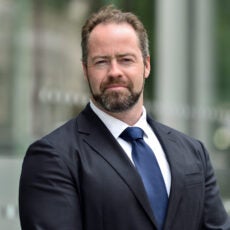
Closed-System Carbon Removal: Building Credible MRV for Geological Net Zero
Direct air capture with storage (DACS), bioenergy with CCS (BECCS), and biomass carbon removal and storage (BiCRS) can deliver durable CO2 removal—if supported by credible MRV. This piece explores why closed-system methods dominate today’s markets, the MRV hurdles they face, and the steps needed to make geological net zero an enforceable standard.
Gigatonne-scale carbon dioxide removal (CDR) is essential for achieving a durable net zero, which has to include geological net zero, meaning one tonne of carbon dioxide committed to geological-timescale storage for every tonne still generated by any continued fossil fuel use. Closed-system methods like DACS, BECCS, and BiCRS offer promising solutions. Yet credibility hinges on rigorous measurement, reporting, and verification (MRV) frameworks addressing lifecycle emissions, storage permanence, and methodological consistency.
In 2024, durable CDR purchases reached ~8 million tonnes, a 78% increase over 2023, led by Microsoft and others. Frontier Climate’s commitments now exceed 400,000 tonnes across BECCS and BiCRS projects. These deals underscore the current dominance of closed-system pathways, where CO2 is stored geologically, compared to open-system approaches, such as enhanced rock weathering and biochar.
Public procurement under the Paris Agreement’s Article 6 is also validating closed-system demand. Switzerland and Norway have launched the first durable removal pilots, while Sweden’s SEK 1.5 billion fund is exploring DACS, BECCS, and mineralization projects in partner countries.
Core MRV Challenges
MRV frameworks must capture the full climate impact of carbon removal pathways. This requires cradle-to-grave lifecycle assessments that track energy, water, and material inputs, with real-time grid data for DACS and BECCS, as well as careful biomass accounting from cultivation through land-use change.
Additionality accounting is also essential, with credible counterfactuals and safeguards against market leakage. Robust storage integrity assessments are needed to verify that injected or embedded carbon remains durably stored. Consistency and transparency in protocols—including standardized methods, version control, and open reporting—are critical for comparability and trust.
Storage integrity demands rigorous geological monitoring—pressure, saturation, and tracer signals—to detect leaks or induced seismicity. UNFCCC Article 6.4 guidance provides reversal-risk tools and buffer pools to reinforce permanence. Natural CO2 domes illustrate this durability: they have held carbon securely for millions of years and can be repurposed for storage. Refilling domes with CO2 captured from the atmosphere restores their original function; further injections then deliver additional climate benefit. This framing is central to “Geological Net Zero.”
Gross storage is the total CO2 injected underground (excluding recycled dome CO2), while net storage subtracts process emissions—such as energy use and embodied capital. Gross storage is easier to monitor and provides the auditable ledger for balancing fossil carbon extraction, while net storage reflects the actual climate outcome and is the relevant metric for crediting in today’s markets.
Protocol fragmentation across registries hampers comparability. Building consensus on approaches that go beyond ISO 14044 and ISO 14064, aligned with UNFCCC MRV, will improve reliability.
Transparent uncertainty and reversal risk disclosures are crucial. Accurate quantification of measurement uncertainty and reversal risks helps buyers and financiers properly price and manage residual risks, as guided by Article 6.4 standards.
DACS-Specific MRV
DACS presents distinct MRV challenges, including high energy (heat and electricity) demands requiring precise accounting of renewable energy procurement. Lifecycle assessments must include sorbent production, degradation, disposal impacts, and water use (where relevant). Additionally, infrastructure for CO2 compression and transport must be rigorously monitored to capture associated emissions and risks.
BECCS- and BiCRS-Specific MRV
Biomass-based approaches require thorough MRV of upstream biomass supply chains (cultivation, land use change, harvesting, transport, preprocessing, fertilizer use) as well as counterfactual biomass fate and decay. These activities can substantially erode claimed CO2 removal benefits. MRV must encompass detailed farm-level data, and in some cases satellite yield assessments, and transparent co-product allocation methods.
Final Call to Action
Getting MRV right for closed-system removals is urgent, because these pathways are already scaling through corporate offtakes and Article 6 pilots. Buyers should demand credits with full lifecycle accounting, clear uncertainty margins, and verified permanence. Developers must preregister transparent protocols, while registries and verifiers enforce aligned audits and version control. Establishing these practices now is essential to make geological net zero an enforceable standard.
Jennifer Wilcox
Presidential Distinguished ProfessorJen Wilcox is Presidential Distinguished Professor of Chemical Engineering and Energy Policy. She previously served as Principal Deputy Assistant Secretary for the Office of Fossil Energy and Carbon Management at the Department of Energy.
Niall Mac Dowell
Professor, Imperial College LondonNiall Mac Dowell is a professor of energy systems engineering at Imperial College London and Global Head of Carbon Management Technology at Barclays. Mac Dowell is a 2024-2025 Kleinman Center Visiting Scholar.
Myles Allen
Head of Atmospheric, Oceanic and Planetary Physics, University of OxfordMyles Allen is the Head of Atmospheric, Oceanic and Planetary Physics at the University of Oxford and Professor of Geosystem Science in the School of Geography and the Environment. He is a board member at Puro.earth.
Photo credit: Roger Aines



